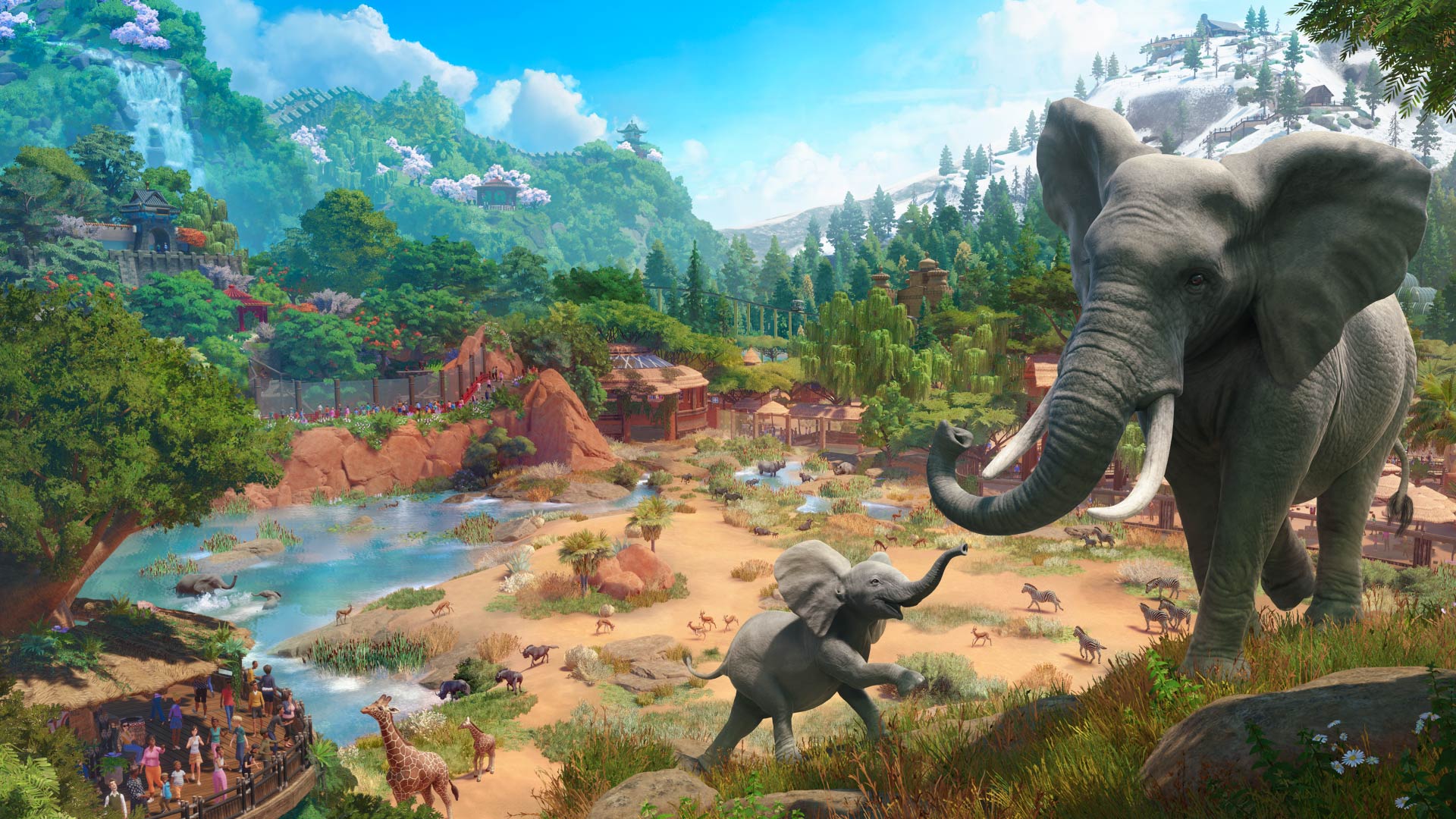Build a world for wildlife with Planet Zoo: Console Edition. From the developers of Planet Coaster and Zoo Tycoon, the ultimate zoo simulator is arriving on console. Planet Zoo brings controller support that puts powerful creative tools at your fingertips and includes years’ worth of features, content, and animals from the celebrated PC video game’s free updates.
Planet Zoo: Console Edition features an incredible array of authentic animals who think, feel, and explore the world you design around them. Create unique habitats and vast landscapes, and make meaningful choices to nurture animals as you construct and manage the world’s wildest zoos using intuitive console controls. Pick up and play across four engaging game modes: embark on a globe-trotting campaign in career mode, build a network of connected zoos in Franchise mode, put your skills to the test in Challenge mode, or let your imagination run wild in the freedom of Sandbox mode.

Build a world for wildlife with Planet Zoo: Console Edition. From the developers of Planet Coaster and Zoo Tycoon, the ultimate zoo simulator is arriving on console. Planet Zoo brings controller support that puts powerful creative tools at your fingertips and includes years’ worth of features, content, and animals from the celebrated PC video game’s free updates.



Yellow Anaconda
The yellow anaconda (or Eunectes notaeus) is a large, yellow-scaled species of constrictor snake with brown-black saddles across its back. It can primarily be found in the tributaries, swamps and marshes of the Paraguay river basin, but can also be located in Bolivia, Argentina and Brazil. As generalist predators, the yellow anaconda will feed on most small to medium sized animals that they are able to catch. The species is known for reaching large sizes – adults can reach an average length of 3.3 to 4.4m, as well as an average weight of 25 to 35kg.
Western Lowland Gorilla
The Western lowland gorilla (or Gorilla gorilla gorilla) is native to Cameroon, Equatorial Guinea, Gabon, Republic of the Congo and Southern Niger, living and foraging in the rainforests, swamp forests and abandoned farmland there. They have black skin, dark forward-facing eyes, a prominent brow ridge, large nostrils and coarse hair which covers most of their body except the face, ears, hands and feet. Males are much larger than females and, when they mature, the hair on their backs becomes grey and they are identified as ‘silverbacks’.
Western Diamondback Rattlesnake
The Western diamondback rattlesnake (or Crotalus atrox) is a species of venomous snake native to the deserts, grassland and scrubland of the USA and Mexico; so named for the pattern of grey and brown scales on its back. It reaches an average length of 1.2m – although a specimen of 2.1m in length has been reported – and males are larger than females. It is a dangerous species that will strike if it perceives threat.
Western Chimpanzee
The Western chimpanzee (or Pan troglodytes verus) is a subspecies of the common chimpanzee native to the forests of Guinea, Liberia, Senegal, Sierra Leone and the Ivory Coast. Along with bonobos, they are the closest living relatives of human beings, sharing more than 98% of our DNA.
West African Lion
Although there are an estimated 20,000 lions in the African wilderness today, the West African lion (or Panthera leo senegalensis) numbers far, far fewer. Only 250 still remain across the entire continent, making the subspecies one of the most threatened of its kind in the world. It currently falls under the ‘critically endangered’ conservation status.
Titan Beetle
The titan beetle (or Titanus giganteus) is an extremely large species that lives in the tropical rainforests of South America. It has a large reddish-brown and black abdomen, black coloration on its legs, antennae and thorax, and pale wings with brown vein structures. The beetle’s robust mandibles are strong enough to snap through twigs and, while both sexes have wings, only the males are capable of flight. Like many species, it is threatened by the ongoing destruction of the rainforest habitat that it calls home.
Timber Wolf
Timber wolves (or Canis lupus) are a large canid species that live across most of the Northern hemisphere. Also known as grey wolves, they are large generalist predators that will eat most prey they can catch, and which are capable of living in a wide variety of different environments. The appearance of timber wolves can vary widely and is mostly dependent on which population is being observed. There are 38 subspecies, each with adaptations to their specific environments, thus causing their varied appearance.
Thomson’s Gazelle
Thomson’s gazelle (or Eudorcas thomsonii) is a small species of grazing mammal that lives in Africa’s Serengeti regions of Tanzania and Kenya. It prefers to live in dry grassland – although is also found in woodland – and has a tan coloured back, white underside and a dark stripe on their flank. They also have a tan muzzle, white cheeks and eye region, as well as black streaks running from their eyes to the start of the muzzle.
Springbok
The springbok (or Antidorcas marsupialis) is a small species of antelope native to the savannahs of Southern Africa. They have lyre-shaped black horns, a tan coat with dark brown markings, a white belly and face, with dark brown tear marks from their eyes to their muzzle. Males and females are a similar size and both have horns, although the male’s are more robust.
Spotted Hyena
The spotted hyena, also known as the laughing hyena (Crocuta crocuta), is native to Sub-Saharan Africa. They are generalist predators that can live in most environments – although they are not found in rainforests or deserts – and their strong forelimbs, well-muscled neck, and comparatively weaker hindlimbs give them a distinctive appearance. Their head is broad with a wide snout and they have sandy fur with black spots, as well as a mane down their neck to their mid back.